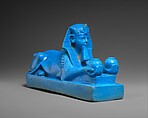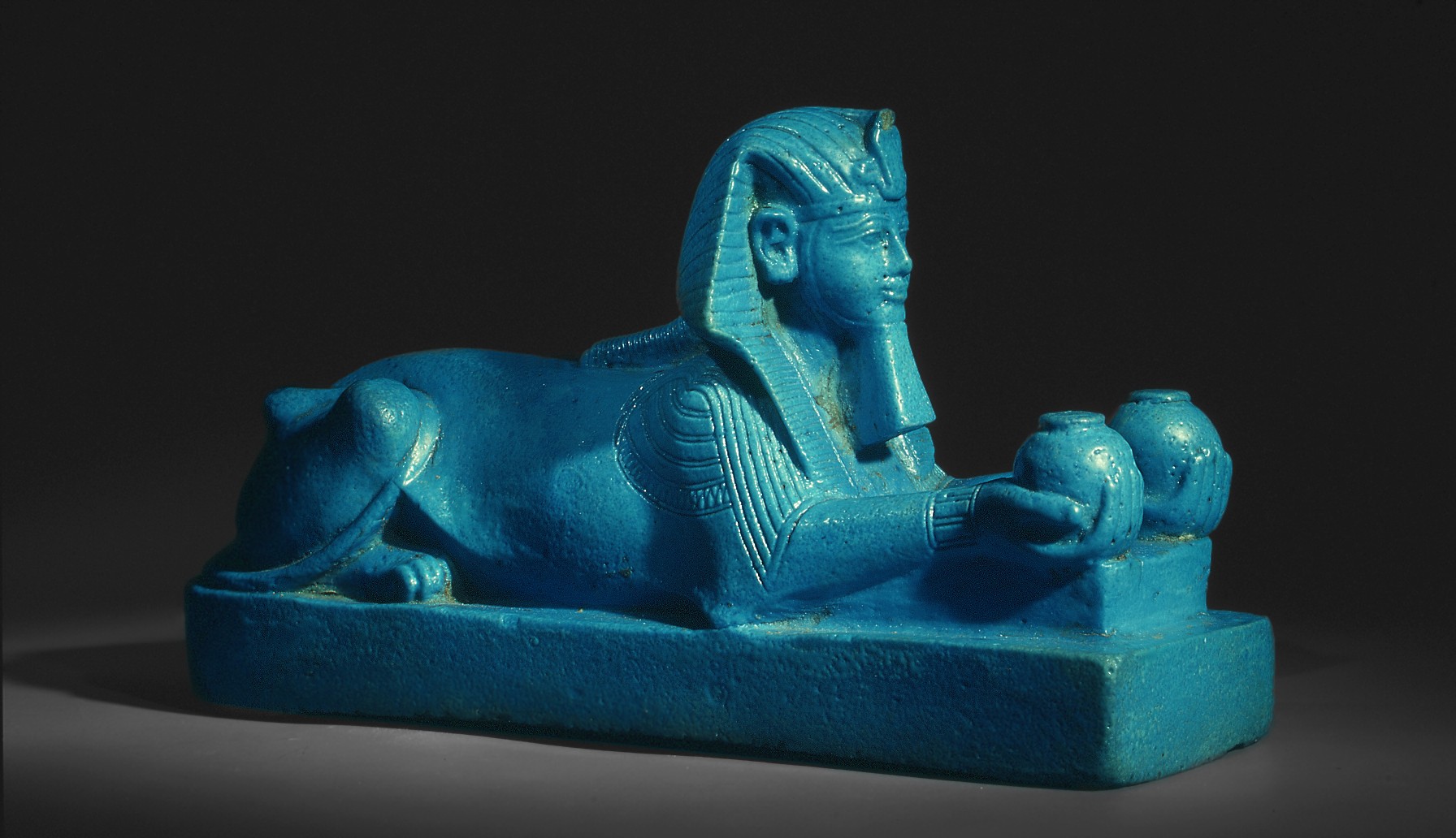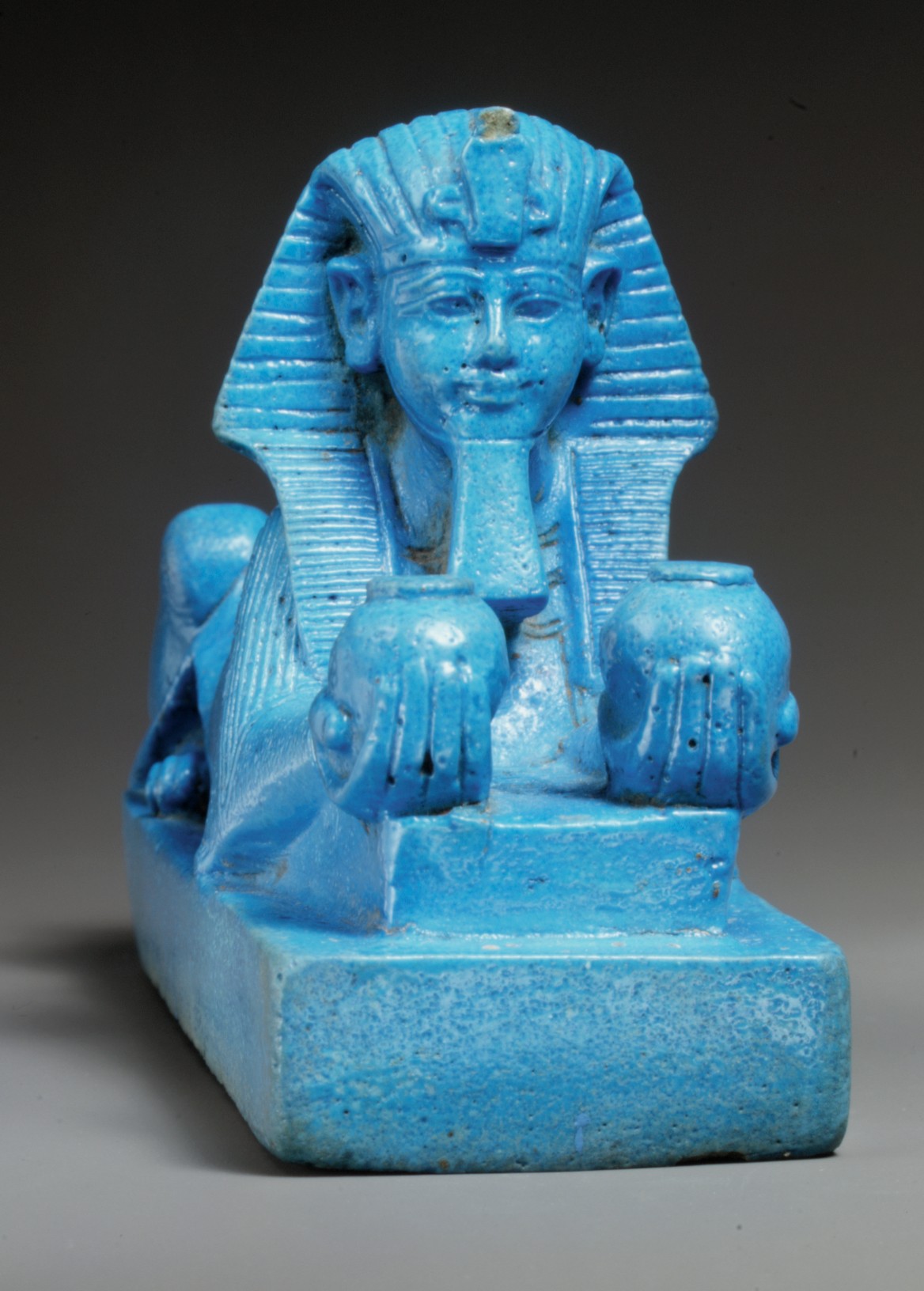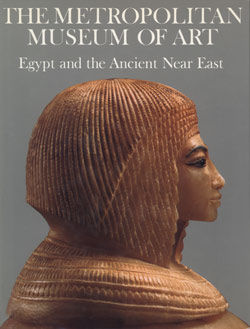Sphinx of Amenhotep III, possibly from a Model of a Temple
New Kingdom
Even without the inscription, the facial features of this faience sphinx would identify it as Amenhotep III. The graceful body of the lion transforms quite naturally into human forearms and hands. In this form, the sphinx combines the protective power of the lion with the royal function of offering to the gods. The even tone of the fine blue glaze and the almost flawless condition of this sculpture make it unique among ancient Egyptian faience statuettes. Another small faience sphinx from a later period may be seen in gallery 127 (1990.25).
Other sphinx statues in the collection are on display in gallery 118 (30.8.72), gallery 116 (08.202.6), gallery 115 (31.3.94, 31.3.167), gallery 111 (17.9.2), and gallery 131 (31.3.166).
Due to rights restrictions, this image cannot be enlarged, viewed at full screen, or downloaded.
This artwork is meant to be viewed from right to left. Scroll left to view more.





















